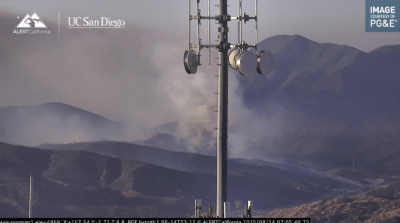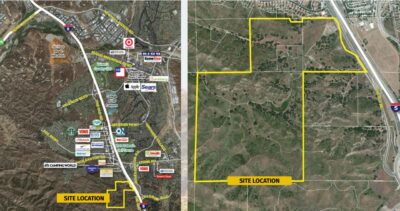Caring parents want to know that when they send the kids to school they won’t be exposed to any danger while there, and if they learn about a threat they’ll usually try to do something about it. However, not all hazards are immediately obvious, and the use of artificial turf – or plastic grass – on sports fields is one of them. Artificial turf has been available since the early 2000s and marketed as a safe alternative to natural grass; however, with experience confirmed by scientific studies, it has proven to be quite the opposite.
Since every high school in Santa Clarita has artificial turf playing fields, parents will be most interested in knowing the health risks, which are of three types: extreme heat, toxicity and increased injury rates.
Regarding heat, Janet Hartin, horticulture expert at the UC Extension in L.A. County, measured various types of surfaces in Palm Springs, and found that when air temperatures were 100 degrees or more (as they are often here in Santa Clarita), synthetic turf temperatures were around 175 degrees. Kelly Turner, associate director of the UCLA Luskin Center for Innovation’s Heat Equity Initiative, says, “It is one of the hottest surface materials. It is hotter than asphalt.” Turf at those temperatures can melt shoes and blister the hands, knees and legs of students playing rough sports on it.
Regarding toxicity, most artificial turf fields – about 90% ‒ are made of plastic grass infilled with 40,000 shredded waste tires, or “crumb rubber.” The crumb rubber is to make the green plastic grass blades stand up and to soften the fields, but it creates health issues because of its toxicity. An analysis of 14 samples of shredded used tires showed that they contained 92 chemicals, of which 11 are carcinogenic and 20 can irritate skin, eyes and lungs. Half of the chemicals identified had not been tested by the government, but the known carcinogens and neurotoxins included lead, mercury, volatile organic compounds, phthalates, benzene and toluene.
As the fields get used, the crumb rubber breaks down and creates a dust of toxic chemicals that can be easily inhaled and distributed throughout the body. Further, when the fields heat up, the chemicals in the plastic grass get released as gases, making them even more likely to be inhaled – especially so since kids playing sports tend to breathe faster and more deeply. And because there’s no barrier between the rubber crumbs and the athletes who play on the fields, small rubber pieces also get in eyes, hair and ears, and are tracked into homes, cars and elsewhere on players’ shoes and socks.
The crumb rubber is bad enough, but these artificial turf fields are maintained with additional toxins — chemical disinfectants, flame-retardants and antimicrobials. A local high school student, the granddaughter of one of our Citizens’ Climate Lobby members, reported that she gets sick every time she plays on an artificial turf playing field – and once she actually fainted mid-game. She may be more sensitive physically than most young people, but she could be considered the “canary in the coal mine” – an early-warning system for others. We do know that children are uniquely vulnerable to exposure to neurotoxins, carcinogens and other toxins.
Serious injuries from playing on synthetic turf have been well documented on www.safehealthyplayingfields.org, including blisters, turf burns, ligament tears and concussions. In addition to being more numerous, wounds suffered on artificial turf are reported by players to require more recovery time. The dangers of playing on artificial turf are so great that the NFL Players Association has called for stadiums to end its use. These are adults who can take care of themselves, but who will look out for our children?
Fortunately, neither the U.S. Environmental Protection Agency nor the Consumer Product Safety Commission still support safety claims for synthetic turf fields or playground rubber mulch. They did at first, until research brought those claims into question. However, the companies selling artificial turf still claim safety, so it’s up to parents and community members to educate themselves and their children’s high school facility managers about the dangers and to press for natural grass on school sports fields.
If this is an issue you’re concerned about and you’d like to join with others who are taking action, you can connect with the SoCal Stop Artificial Turf Task Force, at www.sfvclimatereality.org/artificial-turf. More locally, our Santa Clarita Citizens’ Climate Lobby chapter is working on this issue in collaboration with the task force, and you can contact us at [email protected].
Cher Gilmore
Newhall










